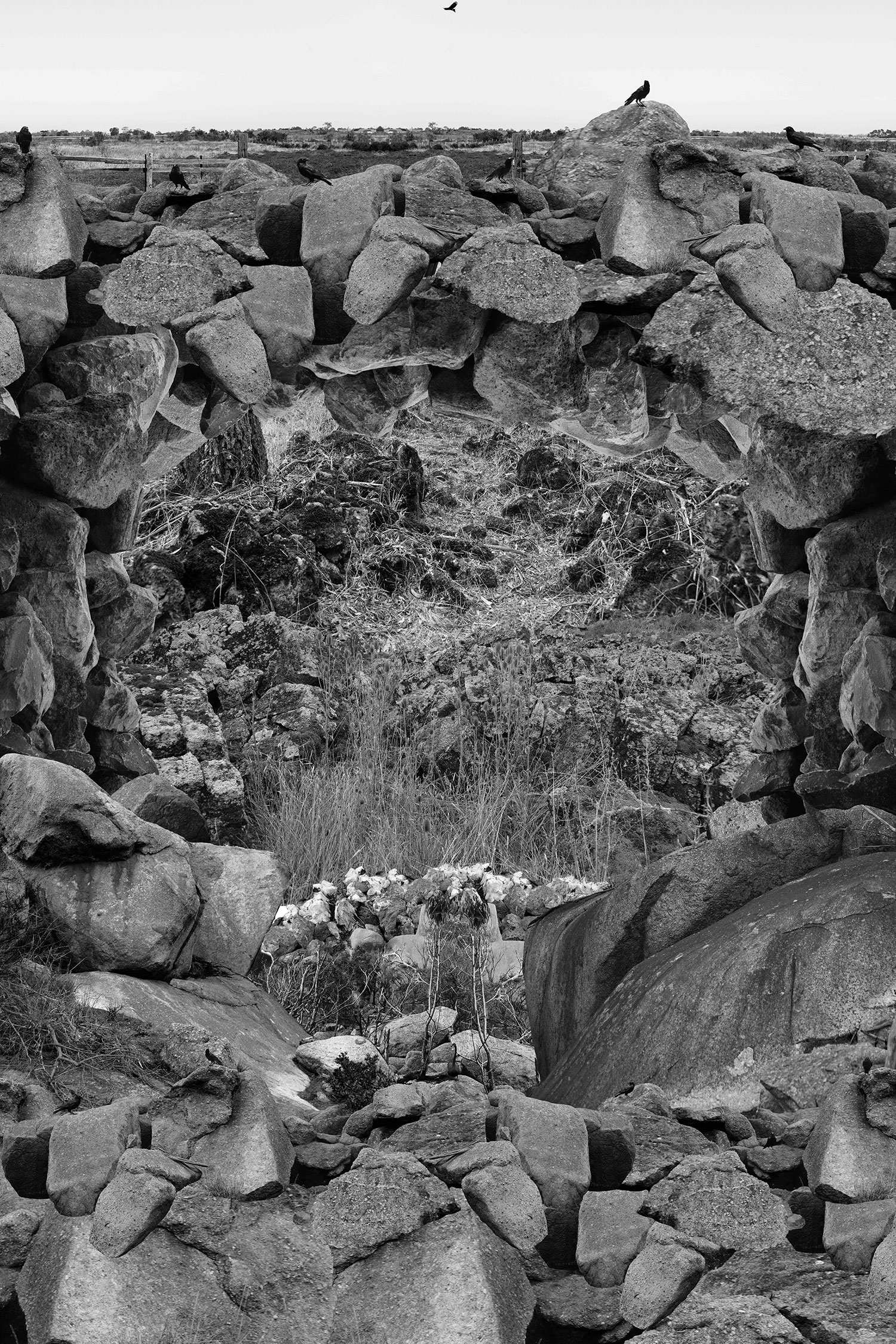Learning Experience 2
Toongkateeyt (Tomorrow), 2017
Even if the race is fated to disappear 3 (Peeneeyt Meerreeng / Before, Now, Tomorrow) (Toongkateeyt (Tomorrow)), 80 × 120 cm, inkjet on cotton rag, 2017
‘For First Nations peoples, the colonisation of Australia attempted to dispossess and disconnect us from Country, culture and community as the introduction of buildings and roads saw sacred sites and familiar grounds over-run.’
– Hayley Millar Baker, artist statement
‘Country’ is an important and complex concept for First Nations peoples which informs identity, spirituality and belonging. It expresses the interconnectedness of all things, including people, animals, plants, water, sky, the land and seasons, as well as customs and stories. Country is also a concept that can be individually defined and interpreted.
Notice where you are currently standing. Imagine the physical layers beneath your feet that are situated between you and Country. What Country are you on? Breathe deeply and concentrate on the connection between your body and place, can you still feel that Country?
Think of a place that is deeply connected to your family. Now, try and envisage the experiences of your ancestors in that place. What changes, alterations, or movements did each generation witness within this place? Were these changes, alterations or movements imposed or self-determined? If you can, revisit family photo albums, documents or listen to oral histories from family members. You might choose to share or undertake this experience with a family member.
The violent colonisation of Australia forced rapid change upon generations of Aboriginal people. The establishment of Christian missions on Aboriginal lands forever changed the physical landscape and separated people from their families, culture and Country. Millar Baker’s 2017 series Toongkateeyt (Tomorrow) traces the experiences of dispossession spanning five generations of the artist’s family, beginning with her grandmother. It also pays homage to Millar Baker’s family’s resilience and continued connection to their ancestral land and culture. The series visually dismantles the post-colonial built environment and reframes it as Country, inviting us to consider the resilience of generations of people who were forced to undergo extreme social, cultural and environmental change.
As land, place and Country change, do the memories they hold change as well? Can these memories transcend the built environment?
